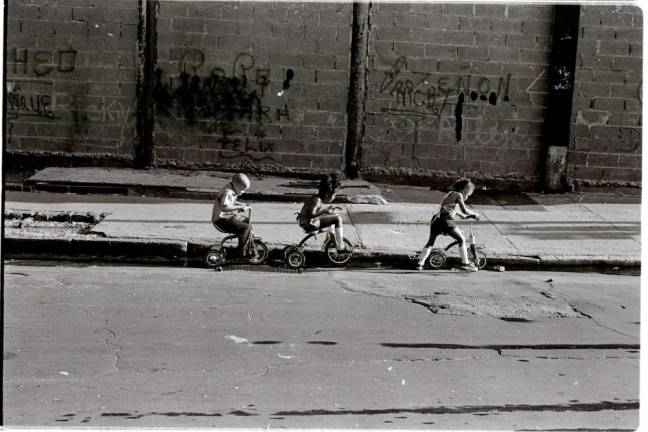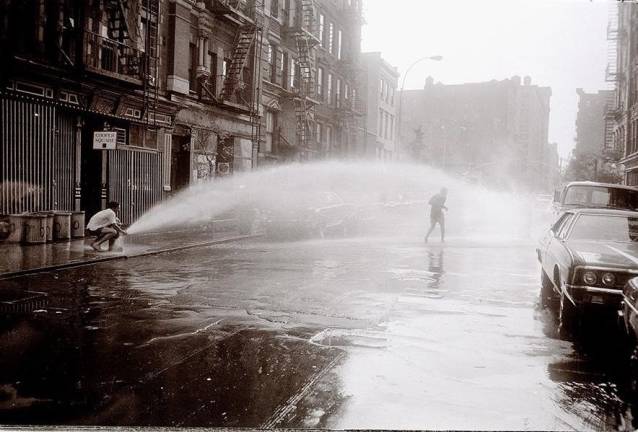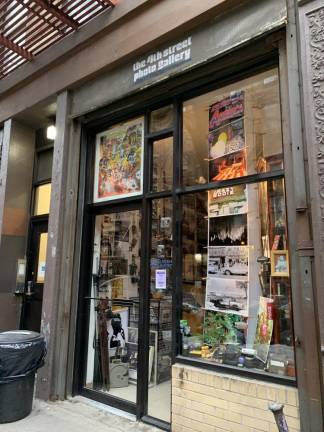Alex Harsley and the 4th Street Photo Gallery
“I see myself as kind of a catalyst,” the photographer says of his work documenting the neighborhood
Alex Harsley, 83, knows this city. He’s been photographing and documenting life here for most of his life and has even captured some once-in-a-lifetime moments throughout his career — like John Coltrane’s first appearance at The Apollo in 1964 — while working as a photojournalist.
In 1971, Harsley founded Minority Photographers Inc., first as a way to showcase his own work — originally out of his apartment at the time. Then it “blew up” and photographers from all over began coming to him to showcase their work, so he needed a larger space. A few years later, at 67 East 4th Street in the East Village, he opened the 4th Street Photo Gallery, which has hosted thousands of artists over the decades, operating with jazz hours — opening in the midafternoon and staying open until the late evening. Harsley spoke with Our Town about photography, what it’s been like being in the neighborhood for so many years and what his life is like today:
How long have you been taking pictures?
I got started back in 1958, but I was always somehow or another close to the medium. In 1956 or ’57 — somewhere around there, probably a little bit earlier — I used to have summer jobs working for different venues. I worked in a camera store for a while. I did messenger work for another organization that was connected with filmmaking. All along the way I’ve kind of been directed towards photography. Back in 1958, I finally purchased a camera, and subsequently I was on the way.
By 1959 I had pretty well gotten the whole thing together enough to take over the photography position at the District Attorney’s office. At that point, I felt I had a license to photograph so I began to go around doing documentary work. And essentially, I got around to flipping that over into fine art prints. So that’s where I am today with that work, still going back and regurgitating most of that information and rescanning and outputting with a digital process. Initially, I started with the doctoral [large format camera] when I was working at the D.A.’s office. Maybe just to do documentation of people of people that [were] coming and going.
[In] ’64 I got out and began taking more photojournalistic type of photos after I decided to leave the District Attorney’s office. Then after that, I found a place that I kind of knew I didn’t know anything about, mainly the old technology of photography and its history, so I started doing research projects. I got pretty well organized to do a lot of research work at that time. I took time off of work, in fact I quit work and decided just to delve my reality into photography and at some point, I’d be able to earn a living whatever I do from it.
What has it been like having the shop for so many years and being a presence in the East Village for so long?
I see myself as kind of a catalyst in terms of getting people to make this area their home. And so much as treating this as a platform in terms of objectively documenting the neighborhood as the neighborhood began to change. Over a period of something like 50 years, I have gone through three generations, probably four generations of people that live in the neighborhood. And from being in one place for that period of time, most everybody knows me, and I know them, so that adds a certain amount of stability to me being here as well as creating more of a documentation of the Lower East Side.
There are a lot of important people in the neighborhood that may seem invisible to the people that live here. Most people don’t know what these people in the neighborhood [are like] and I’ve made contact with them and I’ve given them some sort of profile in terms of these are the people that live in this neighborhood, so it’s a community energy itself within a community. Much like the early Parisian type of thing in terms of the community that formed back then. And that community basically started down here back in the ‘30s and still is growing in terms of the creative community in terms of people who come out of this neighborhood.
Going off of that, over your long-spanning career, what have been some of your most memorable photographs that you’ve taken?
Right now, I’m looking at an image I did back in probably 1960 of Union Square Park and on the right side of the image is S. Klein’s and S. Klein’s used to be the corner store at Union Square. And I got an image of this thing raised. In that space now is a brand-new building, but the park still remains. There’s been a lot of changes in terms of how the street is organized.
I saw there’s a GoFundMe online for the store. Can you talk about that?
Yeah, it’s a matter of keeping up with the rising costs of being here. I have the funding thing in order to help supplement the income from the gallery in order to keep the door open and the lights on. I’m surviving on a whim here.
I live in the area and the other day I saw you while the store was closed working out on a stationary bike in the shop. Do you do that often?
Well, I started riding a bicycle when I could barely walk, so I’ve been cycling ever since. From living in South Carolina all the way to New York, getting totally involved in bicycle events — mainly racing — and my best friend, Herbert Francis, in 1959 went to the Olympics. We were very close friends; I used to help him train. In 1972, I met another brother named Patrick Gulanau, and I got to work with him for about 10 years. He basically got initiated into the Bicycle Hall of Fame. I like riding on that level, but only just competing, I don’t have time to train. My whole thing is photography. I generally document them and help them win races.
I’m still into cycling and the reason I cycle inside is back in 2017 I had a pretty bad incident and got ambushed so I’m afraid to go out on the road again because they barely missed, and I was almost murdered. That’s the reason I ride my roller inside and it’s a professional roller bike. I ride a bicycle because I feel the blood rushing through my body and feel good. It keeps me young and inspired riding the roller.
“There are a lot of important people in the neighborhood that may seem invisible ... I’ve given them some sort of profile in terms of these are the people that live in this neighborhood, so it’s a community energy itself within a community.” Photographer and gallery owner Alex Harsley


